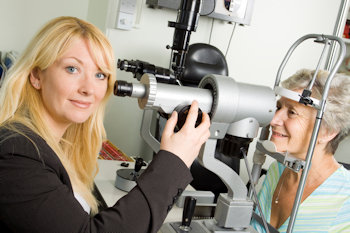Cataract Surgery vs LASIK
Cataract surgery vs. LASIK – is there a difference? Which one do you need? Find out the answers from the experts at Elmquist Eye Group, and let us help you achieve the best possible vision.

Yasaira Rodriguez, MD is a board certified eye surgeon whose areas of expertise include refractive cataract surgery, upper eyelid surgery, LASIK and in-office procedures. She is a member of the American Board of Ophthalmology and the American Society of Cataract and Refractive Surgery.
Kate Wagner, OD, managing partner, and Nina Burt, OD, are both experienced board certified optometrists who provide pre- and post-op exams, testing, and follow-up care to our patients.
About Vision Correction
Although both LASIK and cataract surgery can significantly improve your vision, they are different procedures that serve different purposes in vision correction.
What Conditions Does LASIK Treat?
LASIK is a type of refractive surgery, which means it is used to correct refractive errors in the eye. A refractive error is characterized by an abnormally shaped cornea that prevents the eye from focusing light properly. During the procedure, a laser is used to re-shape the curvature of the cornea and correct the refractive error.
LASIK is not for everyone, but the surgery has proved to be very successful in allowing people with the following conditions to see well without glasses or contact lenses:
- Myopia (nearsightedness) – affects a person’s ability to clearly see objects in the distance;
- Hyperopia (farsightedness) – affects a person’s ability to clearly see objects that are near;
- Astigmatism – affects a person’s ability to see objects that are both near and far;
- Presbyopia – affects a person’s ability to see objects that are very close (such as when reading).
At Elmquist Eye Group, we prefer all-laser LASIK, also called “bladeless” LASIK. This state-of-the-art technique is the most technologically advanced and safest way of performing LASIK surgery.
LASIK, however, cannot correct every single type of vision problem. If you have a cataract, your vision would still be blurred after LASIK surgery because of the cloudy cataract. You need cataract surgery.
What Conditions Does Cataract Surgery Treat?
Cataract surgery is designed to treat the clouding of the lens of the eye, which inhibits light from passing through to the retina normally.
Although most cataracts are a result of aging, there are other types of cataracts. An injury to the eye can cause what is called a traumatic cataract. Certain diseases, such as diabetes, as well as some medications, including prednisone and corticosteroids, can cause cataracts to develop. And, although not common, babies can be born with cataracts or develop them during their first year of life.
Elmquist Eye Group offers bladeless laser-assisted cataract surgery, which is designed to make cataract surgery very precise, safe and accurate. While traditional cataract surgery provides excellent results, this revolutionary procedure enhances our ability to offer patients at Elmquist Eye Group the best possible visual outcomes.
If you need information about cataract surgery vs. LASIK and about which one may be most suitable for you, we encourage you to give Elmquist Eye Group a call at (239) 936-2020 to find out how we can help.
